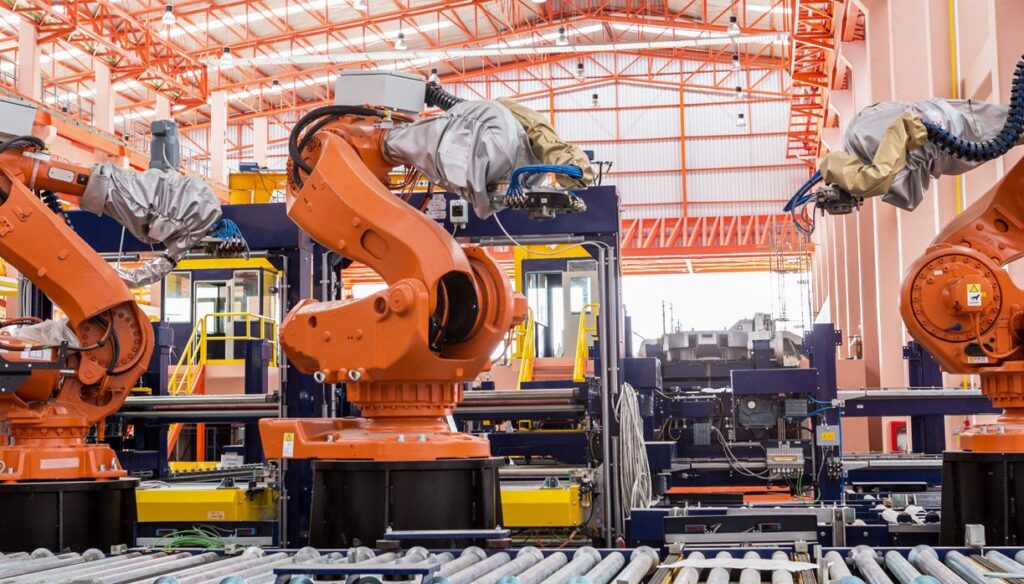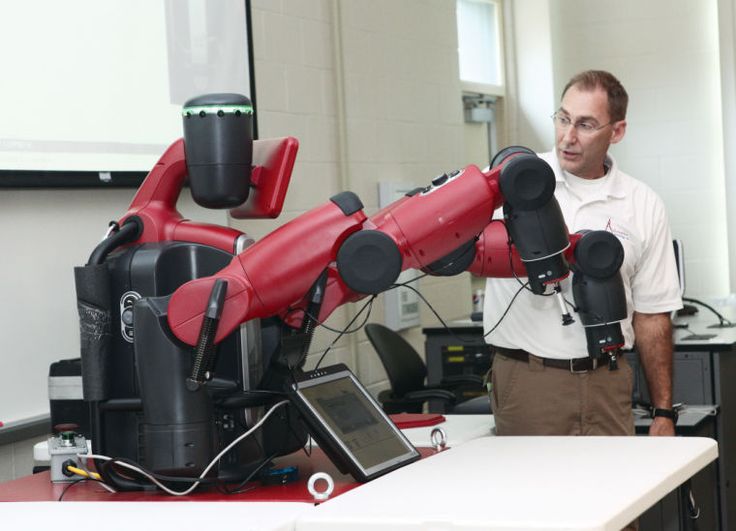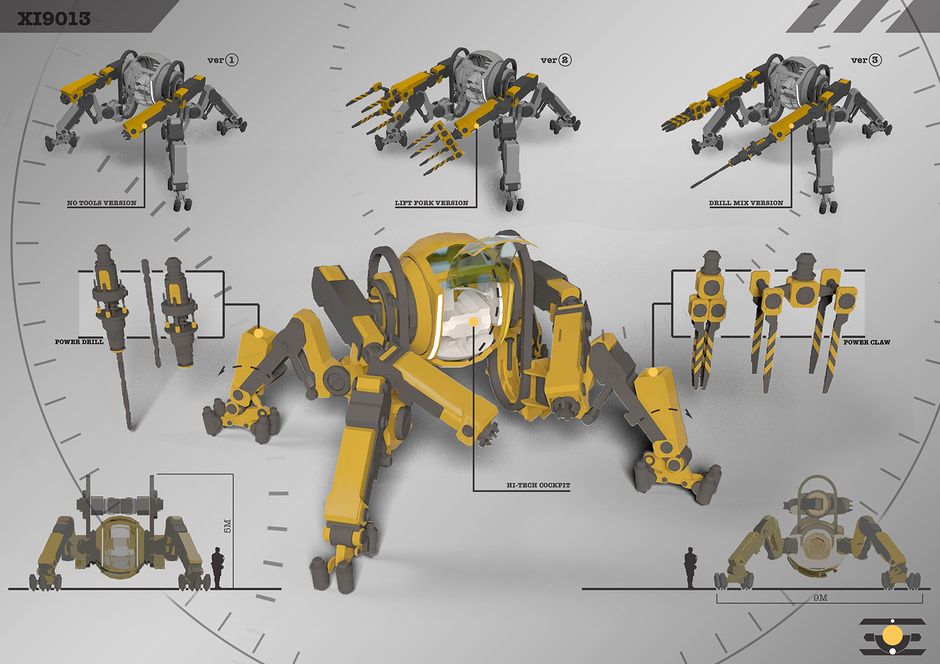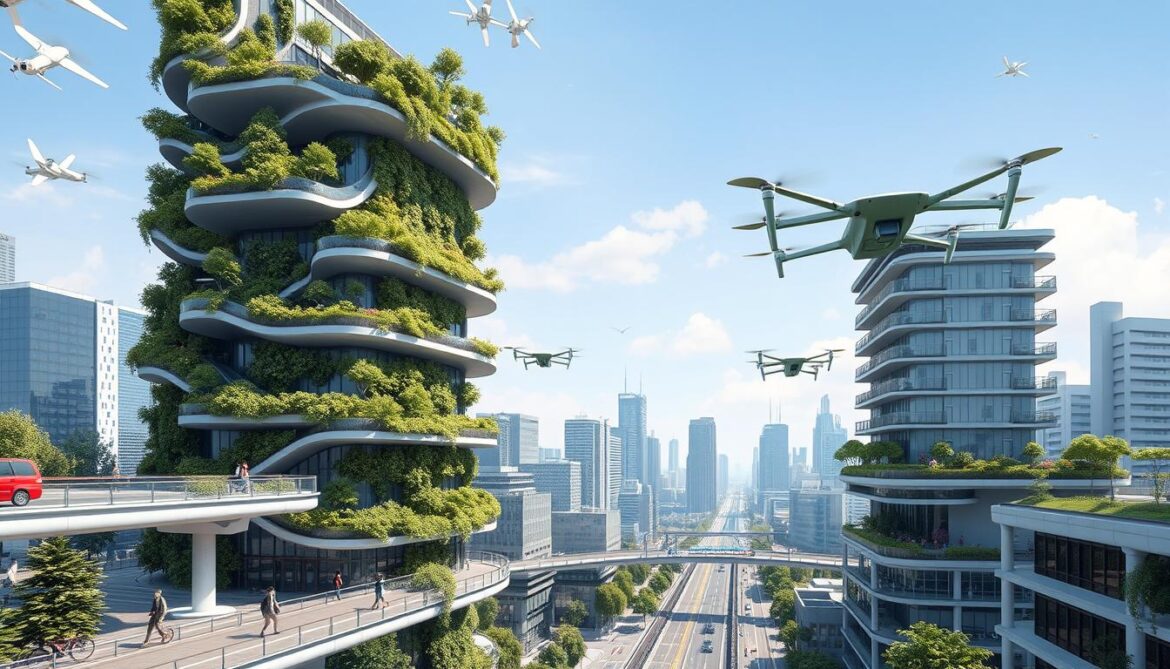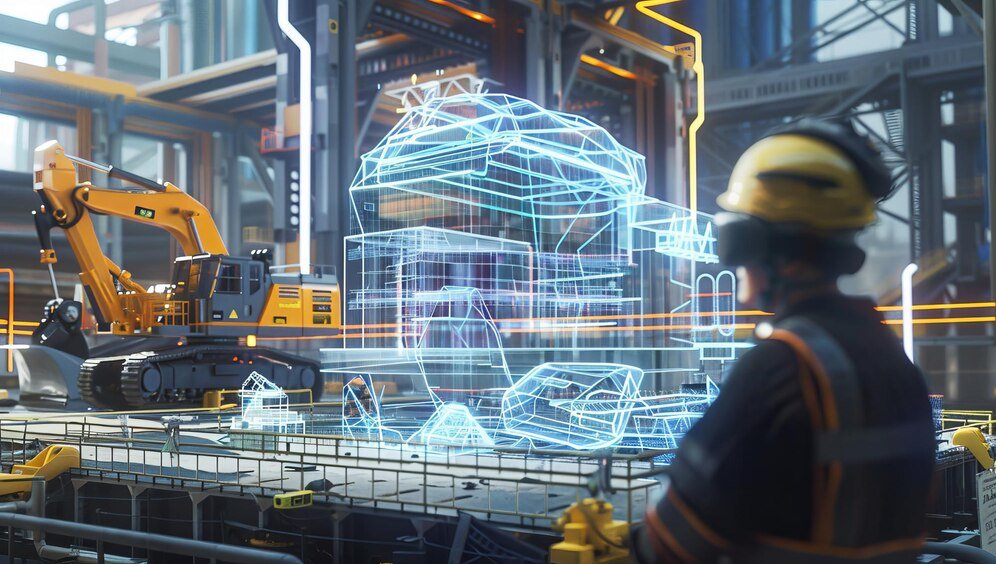The construction industry, often perceived as traditional and slow to innovate, stands on the cusp of a profound transformation, driven by advancements in automation and artificial intelligence. At the vanguard of this revolution is modular robotics, a groundbreaking approach that leverages autonomous, reconfigurable robotic units to streamline and redefine the building process. This isn’t just about replacing human labor with machines; it’s about fundamentally rethinking how structures are designed, fabricated, and assembled. By embracing the principles of modularity and automation, this technology promises unprecedented levels of efficiency, safety, precision, and sustainability, heralding a truly new era for construction and engineering worldwide.
Why Construction Needs Robotics
To fully grasp the critical role modular robotics is poised to play, it’s essential to first acknowledge the long-standing challenges that have plagued the construction industry. Despite its vital role in global infrastructure, construction has lagged behind other sectors in adopting advanced automation.
A. Persistent Challenges in Traditional Construction
For centuries, construction has relied heavily on manual labor, with practices evolving slowly compared to manufacturing or logistics. This reliance has created inherent vulnerabilities and inefficiencies.
- Low Productivity Growth: Unlike manufacturing, which saw significant productivity gains through automation, construction has experienced stagnant or even declining productivity in many regions. This translates to higher costs and longer project timelines.
- Labor Shortages and Aging Workforce: Many developed nations face severe shortages of skilled construction labor. The workforce is aging, and fewer young people are entering the trades, exacerbating the problem and driving up labor costs.
- Safety Hazards and High Accident Rates: Construction remains one of the most dangerous industries globally. Workers are constantly exposed to risks from heavy machinery, working at heights, falling objects, and hazardous materials, leading to high rates of injuries and fatalities.
- Quality Inconsistencies and Rework: Manual processes and varying skill levels can lead to inconsistencies in quality, requiring costly rework and delays. Achieving precision in complex structures is often challenging.
- Environmental Impact and Waste: Traditional construction generates vast amounts of waste material. Inefficient material handling, cutting, and assembly contribute significantly to environmental burden, making sustainability a major concern.
- Cost Overruns and Project Delays: Complex projects are frequently plagued by budget overruns and schedule delays due to unforeseen issues, labor disputes, weather, and logistical challenges. These factors erode profitability and create project uncertainty.
- Limited Adaptability and Customization: While every building is unique, the methods for building them often lack the flexibility to adapt quickly to design changes or to integrate highly customized elements without significant cost implications.
B. The Rise of Automation and Robotics in Industry
In stark contrast to construction, other industries have embraced automation and robotics to achieve unprecedented levels of efficiency, precision, and safety.
- Manufacturing Sector Success: Industries like automotive, electronics, and aerospace have leveraged industrial robots for decades to perform repetitive, precise, and hazardous tasks, leading to higher throughput, consistent quality, and reduced costs.
- Logistics and Warehousing Transformation: Robotics is revolutionizing warehouses, automating tasks like picking, packing, and sorting, significantly improving supply chain efficiency and reducing labor dependency.
- Advanced Software and AI: The maturation of artificial intelligence, machine learning, and advanced sensor technologies provides robots with enhanced perception, decision-making capabilities, and adaptability, moving beyond simple programmed tasks.
- Declining Costs of Robotics: The cost of robotic hardware and software has steadily decreased, making automation more accessible to a wider range of industries, including those with tighter margins like construction.
The convergence of construction’s pressing needs with the advancements in robotics and AI sets the stage for modular robotics to redefine how we build.
Core Concepts of Modular Robotics in Construction
Modular robotics brings a distinct philosophy to construction automation, moving beyond fixed, single-purpose industrial robots to flexible, adaptable, and collaborative systems.
A. Modularity: Reconfigurable and Adaptable Units
The defining characteristic of modular robotics is its inherent modularity. This refers to robotic systems composed of individual, interchangeable units (modules) that can be easily assembled and reconfigured to form different structures or achieve various functionalities.
- Interchangeable Components: Each module is a self-contained unit with specific capabilities (e.g., gripping, lifting, movement, sensing, welding). These can be swapped out or combined as needed.
- Reconfigurability: The ability to rapidly change the robot’s physical form or functional purpose by adding, removing, or rearranging modules. This allows a single set of robotic components to be used for diverse tasks, from bricklaying to façade installation.
- Scalability of Form and Function: By adding more modules, the robot can become larger, stronger, or gain more degrees of freedom, adapting to the scale and complexity of the construction task at hand.
This modularity provides unprecedented flexibility, allowing robots to adapt to the unique and dynamic environments of construction sites, unlike the fixed setups of factory robots.
B. Autonomy: Self-Operating Capabilities
While some modular robots might require human supervision, the long-term vision is for increasing levels of autonomy, allowing robots to perform tasks with minimal human intervention.
- Environmental Perception: Robots equipped with advanced sensors (LiDAR, cameras, ultrasonic sensors) can perceive their surroundings, creating 3D maps of the construction site, identifying obstacles, and locating materials.
- Task Execution: Robots can execute pre-programmed tasks or adapt their actions based on real-time sensor data, performing operations like measuring, cutting, drilling, fastening, and material handling.
- Navigation and Mobility: Many modular robots are designed for mobility, capable of navigating rough terrain, climbing structures, or moving across large construction sites, often leveraging advanced path planning algorithms.
- Decision-Making (AI Integration): Integrating AI and machine learning allows robots to make intelligent decisions, optimize workflows, and even learn from experience, improving their performance over time.
C. Swarm Robotics and Collaborative Systems
Beyond individual autonomous units, a powerful concept emerging is swarm robotics, where multiple simple, autonomous modular robots collaborate to achieve complex tasks that would be impossible for a single robot.
- Decentralized Control: Each robot makes independent decisions based on local information, but their collective actions achieve a global objective (e.g., multiple small robots lifting a large beam, or hundreds working simultaneously on a façade).
- Resilience through Redundancy: If one robot in the swarm fails, others can compensate, ensuring the overall task progresses. This inherent redundancy makes the system highly resilient.
- Efficiency for Large-Scale Tasks: Swarms can distribute work efficiently across a large area, accelerating tasks like cleaning, inspection, or material movement on expansive construction sites.
- Human-Robot Collaboration (Cobots): The development of “cobots” (collaborative robots) allows robots to work safely alongside human workers, assisting with heavy lifting, repetitive tasks, or precision work, rather than completely replacing them.
D. Digital Integration and Building Information Modeling (BIM)
The success of modular robotics is intrinsically linked to its integration with digital construction tools, particularly Building Information Modeling (BIM).
- Digital Twin Connection: BIM models serve as the digital twin of the construction project, providing robots with precise geometric data, material specifications, and task sequences. Robots can then execute actions directly based on this digital blueprint.
- Real-time Feedback: Sensors on robots can feed real-time progress data and as-built conditions back into the BIM model, allowing project managers to monitor progress, identify deviations, and make informed decisions.
- Automated Workflow Generation: BIM data can be used to automatically generate robotic task plans, optimize movement paths, and simulate operations before physical execution, reducing errors and improving efficiency.
- Design for Robotic Fabrication/Assembly: Architects and designers can leverage BIM to specifically design components and structures that are optimized for robotic fabrication and assembly, streamlining the construction process from inception.
Transformative Advantages of Modular Robotics in Construction
The adoption of modular robotics promises to revolutionize construction by addressing its most persistent challenges, leading to significant advancements across the board.
A. Dramatically Enhanced Efficiency and Speed
Modular robots can perform repetitive tasks with relentless precision and speed, far exceeding human capabilities over extended periods.
- Accelerated Task Execution: Robots don’t fatigue, get distracted, or require breaks, allowing for continuous operation, accelerating tasks like bricklaying, welding, or insulation installation.
- Optimized Workflows: Through AI-driven path planning and task sequencing, robots can execute workflows with optimal efficiency, minimizing wasted movement and time.
- Faster Project Completion: By speeding up individual tasks and reducing delays due to labor shortages or inconsistencies, modular robotics can significantly shorten overall project timelines, leading to faster revenue generation.
- Reduced Labor Time: While not eliminating human roles, robots take over the most physically demanding or repetitive tasks, allowing human workers to focus on more complex, supervisory, or creative roles.
B. Significant Improvement in Safety and Risk Reduction
Automating hazardous tasks fundamentally changes the safety profile of construction sites.
- Elimination of Hazardous Exposure: Robots can perform dangerous jobs like working at extreme heights, in confined spaces, or handling heavy and hazardous materials, removing human workers from risky situations entirely.
- Reduced Repetitive Strain Injuries: Repetitive tasks that lead to long-term injuries for human workers (e.g., continuous lifting, hammering) can be assigned to robots, improving worker health and reducing worker compensation claims.
- Precision and Predictability: Robots operate with programmed precision, reducing the likelihood of accidents caused by human error or fatigue.
- Real-time Hazard Detection: Advanced sensors on robots can detect potential hazards (e.g., unstable ground, approaching vehicles) and alert human workers or autonomously avoid danger zones.
C. Unprecedented Precision and Consistent Quality
Robots execute tasks with a level of accuracy that is difficult to achieve manually, leading to superior quality outcomes.
- Sub-millimeter Accuracy: Robots can place components, drill holes, or apply materials with extremely high precision, far surpassing manual capabilities, ensuring tight tolerances and perfect alignment.
- Elimination of Rework: Higher precision from the outset reduces the need for costly rework, saving time, materials, and labor.
- Standardized Output: Robots ensure consistent application of materials and assembly techniques, leading to uniform quality across large projects, regardless of varying human skill levels.
- Automated Quality Control: Robots can integrate sensors for in-process quality control, identifying deviations immediately and alerting operators or self-correcting.
D. Enhanced Resource Efficiency and Sustainability
Modular robotics contributes significantly to the environmental and economic sustainability of construction.
- Reduced Material Waste: Precision fabrication and assembly minimize cutting errors and material spoilage, leading to less waste generation on-site.
- Optimized Material Usage: Robots can apply materials more efficiently (e.g., precise adhesive application, optimized paint spraying), reducing overall consumption.
- Energy Efficiency: Robots can be programmed to optimize energy usage during operations. Furthermore, the overall reduction in project time and rework indirectly contributes to lower energy consumption.
- On-Demand Fabrication: Modular robots can facilitate on-site or near-site fabrication of customized components, reducing transportation costs and the carbon footprint associated with long-distance shipping.
E. Greater Design Freedom and Customization
By automating complex fabrication and assembly, modular robotics can liberate architects and designers, enabling more intricate and unique structures.
- Complex Geometries: Robots can execute highly complex, non-standard geometries and forms that would be extremely challenging or impossible for manual construction.
- Mass Customization: The flexibility of reconfigurable robots allows for cost-effective customization of building components or entire structures, moving beyond mass-produced uniformity towards bespoke designs.
- Integration of Smart Materials: Robots can precisely handle and integrate new smart materials that require specific environmental conditions or delicate handling, enabling advanced building functionalities.
- Rapid Prototyping: Modular robotic systems can quickly prototype architectural designs, allowing for faster validation and iteration in the design phase.
Challenges and Considerations in Adopting Modular Robotics
Despite its immense promise, the widespread adoption of modular robotics in construction faces several significant challenges that organizations must carefully navigate.
A. High Initial Investment and Return on Investment (ROI)
The upfront cost of acquiring sophisticated modular robotic systems, along with the necessary training, software, and integration infrastructure, can be substantial. For many construction firms, especially smaller ones, this represents a significant financial hurdle. Demonstrating a clear and rapid Return on Investment (ROI) can be challenging, particularly for projects that aren’t highly repetitive or standardized.
B. Technical Complexity and Integration Expertise
Implementing modular robotics requires deep technical expertise in robotics, automation, software engineering, and systems integration. Integrating these complex systems with existing workflows, BIM platforms, and other digital tools requires specialized knowledge that many construction firms currently lack. The interoperability between different hardware and software vendors can also be a challenge.
C. Workforce Reskilling and Job Displacement Concerns
The introduction of robotics will inevitably change the nature of construction jobs. While some physically demanding tasks may be automated, new roles in robotic operation, maintenance, programming, and data analysis will emerge. However, the fear of job displacement among the existing workforce can create resistance to adoption. Significant investment in reskilling and upskilling programs is necessary to prepare the current labor pool for these new roles and ensure a smooth transition.
D. Dynamic and Unpredictable Construction Environments
Unlike controlled factory settings, construction sites are highly dynamic, unstructured, and often unpredictable environments. Factors like changing weather conditions, varying ground stability, unexpected obstacles, and human presence create complexities that make autonomous robot navigation and task execution challenging. Robots need advanced perception and adaptive control systems to operate reliably in such conditions.
E. Safety Regulations and Legal Frameworks
The deployment of autonomous robots, especially large and powerful ones, on active construction sites raises significant safety and legal considerations. Existing safety regulations, often designed for human-centric operations, may not fully address the nuances of human-robot collaboration or fully autonomous systems. Developing new safety standards, certification processes, and legal frameworks for liability will be crucial for widespread adoption.
F. Data Management and Cybersecurity Risks
Modular robots generate vast amounts of data—sensor readings, progress logs, diagnostic information. Effectively managing this data, ensuring its security, and deriving actionable insights requires robust data infrastructure and analytics capabilities. Furthermore, networked robotic systems introduce cybersecurity risks, making them potential targets for malicious attacks that could disrupt operations or compromise sensitive project data.
G. Design Adaptability and Generative Design Integration
While robots offer design freedom, fully leveraging their capabilities requires architects to adapt their design processes. This involves moving towards generative design, where algorithms explore countless design variations, often optimized for robotic fabrication. This shift requires new design tools and a deeper understanding of robotic constraints and capabilities among design teams.
H. Ethical and Societal Implications
Beyond the technical and economic challenges, the widespread adoption of construction robotics raises ethical and societal questions. These include the broader impact on employment, the potential for increased inequality if access to technology is uneven, and the responsibility for accidents involving autonomous systems. A thoughtful societal dialogue is necessary to navigate these implications.
Best Practices for Embracing Modular Robotics in Construction
For construction firms looking to strategically integrate modular robotics and reap its benefits, a measured and well-planned approach is essential, focusing on integration, people, and processes.
A. Adopt a Phased, Incremental Approach
Avoid a ‘big bang’ adoption. Start with small, well-defined pilot projects that target specific, high-value, repetitive, or hazardous tasks where robotics can demonstrate clear benefits (e.g., specific welding tasks, material handling in a controlled environment). Learn from these initial implementations, refine processes, and then gradually expand the scope of robotics integration across more complex projects and workflows.
B. Invest Heavily in Workforce Reskilling and Education
Recognize that robotics will transform roles, not eliminate all jobs. Prioritize investing in comprehensive reskilling and upskilling programs for your existing workforce. Train workers to operate, monitor, maintain, and program robotic systems. Foster a culture of continuous learning and embrace collaboration between human workers and robots (cobots). Early and transparent communication about the benefits and changes will help alleviate fears.
C. Prioritize Digital Integration with BIM and Data Platforms
The success of modular robotics hinges on its digital backbone. Ensure strong integration with Building Information Modeling (BIM) as the central data source for robotic operations. Invest in robust data platforms for collecting, analyzing, and visualizing data generated by robots. This enables real-time progress monitoring, predictive maintenance, and data-driven decision-making, moving towards a digital twin of the construction site.
D. Design for Automation from the Outset
Encourage architects and engineers to design structures and components with robotic fabrication and assembly in mind. This involves adopting principles of DfMA (Design for Manufacture and Assembly), standardizing interfaces, and optimizing geometries for robotic manipulation. Collaboration between design and construction teams early in the project lifecycle is crucial to unlock the full potential of robotics.
E. Establish Robust Safety Protocols and Regulations
Develop and strictly adhere to comprehensive safety protocols for human-robot interaction on job sites. This includes clear zones of operation, emergency stop mechanisms, advanced sensor-based collision avoidance, and thorough training for all personnel working alongside robots. Proactively engage with regulatory bodies to help shape new safety standards for autonomous construction equipment.
F. Focus on Specific High-Value Use Cases
Instead of trying to automate everything at once, identify specific high-value use cases where modular robotics can deliver the most significant impact. These might include:
- Repetitive Assembly: Bricklaying, rebar tying, facade installation.
- Heavy Lifting and Material Handling: Moving large or awkward components.
- Hazardous Tasks: Demolition, working in contaminated areas, welding, spraying.
- Precision Work: Drilling, complex cutting, 3D printing of components.
- Quality Inspection: Automated scanning and defect detection.
G. Embrace a Culture of Innovation and Experimentation
For construction firms to succeed with modular robotics, they must foster a culture of innovation and continuous experimentation. Be willing to pilot new technologies, learn from failures, and adapt quickly. This involves allocating resources for R&D, encouraging cross-functional teams to explore robotic solutions, and staying abreast of the latest advancements in automation and AI.
The Future Trajectory of Modular Robotics in Construction
The foundations are being laid, but the full potential of modular robotics in construction is still largely untapped. Several exciting trends are poised to shape its future trajectory.
A. Hyper-Automation and Lights-Out Construction
The long-term vision includes reaching levels of hyper-automation, where entire sections of a construction project could operate in a ‘lights-out’ mode, with minimal human presence. This would be facilitated by highly autonomous modular robots coordinating via swarm intelligence, intelligent material delivery systems, and real-time digital twins managing the entire process. This promises extreme efficiency and safety.
B. Advanced AI and Machine Learning Integration
Future modular robots will leverage even more sophisticated AI and machine learning. This will enable them to:
- Learn from Environment: Adapt to unforeseen site conditions and learn optimal construction methods.
- Predictive Maintenance: Robots self-diagnosing and predicting maintenance needs.
- Generative Design Collaboration: AI algorithms will co-create designs optimized for robotic fabrication, pushing the boundaries of architectural possibility.
- Cognitive Robotic Systems: Robots with enhanced perception and decision-making capabilities, making them more adaptable to novel situations.
C. Off-Site and On-Site Synergy
The distinction between off-site prefabrication (factory-based) and on-site assembly will blur. Modular robots will excel in highly controlled factory environments for producing complex components, but increasingly, they will also be deployed directly on-site to perform intricate assembly, allowing for larger, non-transportable modules and faster on-site completion. This synergy will optimize logistics and project timelines.
D. Robotics as a Service (RaaS) Models
The high initial investment in robotics might lead to the proliferation of Robotics as a Service (RaaS) models. Construction firms could rent or subscribe to robotic capabilities as needed for specific project phases or tasks, reducing capital expenditure and allowing access to cutting-edge technology without ownership burdens. This democratizes access to advanced automation.
E. Sustainable Materials and Autonomous Fabrication
Modular robotics will increasingly be paired with the use of sustainable and novel materials. Robots can precisely handle and apply eco-friendly materials, potentially even fabricating components from recycled waste on-site through advanced additive manufacturing techniques (e.g., robotic 3D printing of building elements). This will significantly reduce construction’s environmental footprint.
F. Digital Twin Integration for Lifecycle Management
The concept of the digital twin will evolve, providing a live, constantly updated virtual replica of the entire building throughout its lifecycle. Modular robots will contribute data to this twin during construction, and subsequently, other robots could be used for automated inspection, maintenance, and even demolition, managing the structure from cradle to grave in a digitally integrated manner.
Conclusion
Modular robotics is not merely an incremental improvement; it represents a fundamental shift that is set to redefine the construction industry. By introducing unprecedented levels of automation, precision, and adaptability, these reconfigurable robotic units are poised to tackle the industry’s most entrenched challenges: low productivity, safety hazards, labor shortages, and environmental impact. The vision of smart, autonomous robots collaborating with human ingenuity to build our future cities is rapidly moving from science fiction to practical reality.
While significant hurdles remain, particularly in terms of initial investment, technical integration, and workforce adaptation, the transformative benefits are too compelling to ignore. Organizations that strategically embrace and invest in modular robotics, coupled with a commitment to digital integration and continuous innovation, will be the pioneers shaping construction’s new era. This isn’t just about constructing buildings; it’s about engineering a more efficient, safer, and sustainable future, one precisely assembled module at a time.

